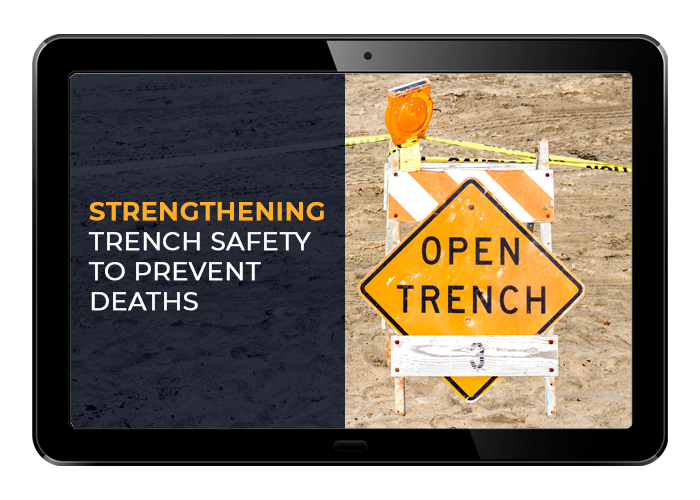
With a complete lack of cave-in protection being the main cause of the 23 deaths occurring because of trench collapses in 2016, this eBook considers the main forms of protection and constant updates which are made by OSHA every year to try and improve trench safety. Hopefully, this will decrease the constantly growing number of fatal accidents occurring due to this problem, with workers who repair water, sewer and utility lines, along with road builders being among the most vulnerable.
Concentrating on changes made by OSHA in September 2018 to improve trench safety, the main updates discussed are in this eBook are:
- Public Services Announcement Video: This video considers the main forms of protection and discusses the procedures that need to be improved, which are listed and explained in this eBook. Some disturbing examples are mentioned, explaining what can happen if trench safety is not considered as a top priority. For example, OSHA fining a US plumbing company in 2016, after an employee was buried alive when installing a sewer line. A complete lack of cave-in protection, as well as insufficient training, were recorded here.
- Revised Quickcard and ‘Protect Workers in Trenches’ Poster: OSHA updated their trench safety Quickcard this year, listing the main protective systems of ‘SLOPE’, ‘SHORE’ and ‘SHIELD’, along with reasons why a trench should never be entered. This poster just lists the three main protective systems mentioned, with a short description of each.
It is always important that workers are provided with the methods of protection mentioned in this new video, but most importantly that they are taught to recognize any trench safety hazards themselves. Problems should be noticed as soon as they occur, but most importantly workers should always recognize any safety hazards which they should never be expected to work in.
Download this Ebook to learn why the fatal accidents that occur in trenching continue to increase and how OSHA attempts to improve protection over time.
